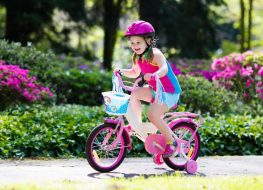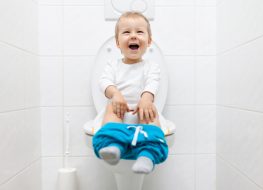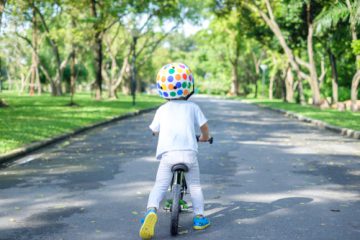
It’s normal for first-time parents to be paranoid and stressed. You can’t help it! You have tons of concerns about how your child is growing. You might even worry that your child will develop their motor skills late. Or perhaps you just want a new hobby for your little one.
Either way, now is the right moment to introduce your kid to biking. First, let’s understand how having a baby bike can improve your toddler’s health and well-being.
Is Riding a Bike Good for My Baby?
It is completely understandable that some parents are wary of letting their toddlers play and ride bicycles. After all, babies are fragile and prone to accidents. However, despite this inert need to pamper, we must ensure our children achieve the ideal growth and development. Riding a bicycle can help in that area!
But when is it safe to have a baby mount a bike? Believe it or not, babies can already ride baby bicycles as early as eighteen months old. Infants develop their neck muscles at twelve months, indicating they are strong enough to support their heads for biking. Let’s find out how riding a bicycle can benefit your baby.
Physical Development
One of the most evident benefits of cycling is the growth of your toddler’s muscles and bones. Putting your child on ride-on toys and starter bikes practices their lower limb movements, allowing their leg muscles and bones to mature and strengthen.
Furthermore, cycling develops your baby’s stamina and improves cardiovascular health. Riding a bike can build up their heart and lung muscles, further enhancing circulation and cardiovascular endurance.
Balance and Coordination
As your child bikes, they will develop proper balancing and coordination. Baby bicycles with no pedals help your child safely and smoothly transition to regular bikes by developing their balance, sense of control, muscle coordination, and full-body spatial awareness.
Additionally, developing these motor abilities early can build strong foundations for more advanced motor skills like walking and running.
Emotional Improvement
Besides physical and motor development, riding a bicycle can also enhance a child’s self-esteem. Allowing your child to ride on a bike can give them independence and freedom to explore and be comfortable in their immediate environment. Doing so can build their confidence and contribute to the development of their self-esteem.
Learning to ride and balance on a bike will require a great deal of patience, perseverance, concentration, and attention. Allowing your child to ride a bicycle can develop and enhance these soft and social abilities.
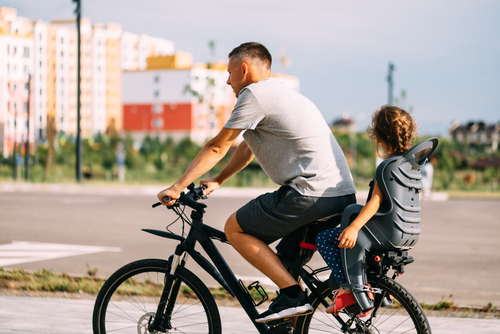
Types of Baby’s Bikes
Knowing how important cycling can be to your toddler’s physical and emotional development may give you the urge to purchase a bicycle for your child. But before you can even browse through the countless baby bicycles online, you must take the following into consideration.
- A baby’s age – Some bikes are more suitable for certain age groups, like trailer cycles and balance bikes.
- A child’s height – Your child should be able to push themselves off the ground to move certain bikes. Considering their height will allow them to ride their cycles comfortably.
- Tire size – Similar to height, tire sizes can affect how your baby rides their bike. Smaller tires are generally more suitable for younger children.
- Wheels – Parents may want to add training wheels on their child’s bikes to assist them in learning to pedal. However, some would argue that these aren’t needed and may actually be detrimental to their bike learning.
Keeping these points in mind will allow you to select the appropriate toddler bike type for your child.
Baby Bike Seat
Similar to their vehicle counterparts, you can securely place your baby on your bike with bike seats. These are typically used for children who aren’t developed enough and ready to mount a bike independently. Baby bicycle seats are usually for infants who are nine months old.
There are different bike seats depending on where the saddle is attached to the bike: rear, front, or mid-mount. Toddler bike seats also have safety belts and head support. Some even include crouch posts for extra security.
While shopping for child bike seats, ensure that the seat is durable and compatible with your adult bike. Having a baby bike seat that suits your bike can ensure the safety and security of your child.
Bicycle Trailer
A bicycle trailer is identical to a bike seat: they are both for kids who aren’t ready to have a solo bike ride. So your baby is a passenger in a bicycle trailer. However, instead of attaching to your bike’s frame, a bicycle trailer is a cart being towed by your bike.
Like the bike seat, bicycle trailers have security harnesses to keep your baby safely seated in the cart. These are also larger than bike seats and are usually enclosed, shielding your child from possible harm and providing more comfort.
Bicycle trailers have versatile features. Some trailers can be converted to strollers, and some models have enough room for two children. Some bicycle trailers can also have pedals for your child to help them practice pedaling.
Trailer Cycle
Once your child starts developing their gross motor skills, time to get them on a trailer cycle or a tag-along bike. Like the previous types, these are attached to your bike’s frame. However, trailer cycles are designed to look like actual bikes without a front wheel.
As the name indicates, tag-along bikes help your child learn how to ride an actual bicycle by allowing them to pedal and pivot as they tag along with you. Essentially, you are guiding your kid on how to balance and pedal a bike.
Having your child on a trailer cycle practices their coordination and gives them more independence compared to bike seats and bicycle trailers.
Balance Bike
Lastly, balance bikes are perfect for eighteen-month-old toddlers and two-year-olds. These are lightweight bikes with no pedals, designed specifically to help young children learn how to balance before they are introduced to actual bikes.
Toddlers must push the ground with their feet to propel them forward and maneuver their balance bikes. Therefore, they must learn to shift their weight and stay upright using their feet. Balance bike models typically do not have brakes, relying only on the baby’s feet, but other models have these.
Having your child ride a balance bike will help them smoothly transition to self-cycling.
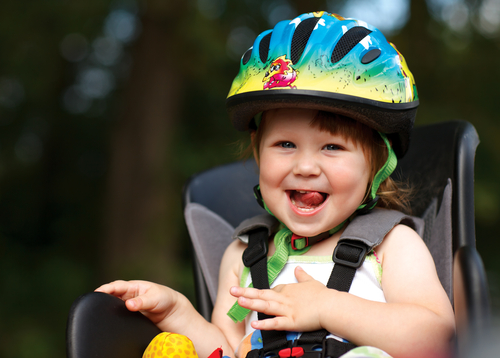
What New Riders and Their Parents Should Know
You and your child must be excited to try cycling. However, it would be beneficial if you remembered a few things before allowing your tiny rider to cycle freely.
- Regularly check if the bike is still suitable for your child. Children develop rapidly during their earlier years, so, inevitably, your baby will quickly outgrow their bikes. Moreover, always check if the bike’s features are still working properly, like its handles, brakes, and lights.
- Always wear safety gear while biking. Whether sitting on a bike seat or riding a balance bike, your baby must wear a snug-fitting bike helmet and elbow guards to ensure their safety.
- Consider your baby’s attire. Make sure your toddler wears appropriate bike attire, like a close-fitting bodysuit. They must not have dangling accessories and straps that may cause unnecessary injuries.
- Don’t bike during the nighttime. The daytime can provide higher visibility, helping you keep a close eye on your child as they bike. Doing this will prevent accidents and will allow you to immediately attend to your toddler if they ever get into one.
- Make a biking schedule. Setting specific times for your child to focus on biking will help develop their concentration and attention. Avoid allowing your toddler to bike right after eating to prevent stomach issues like indigestion and discomfort.
- Set a particular parameter where your child can bike. Doing this will help you keep track of where your child is. Setting a parameter can prevent your baby from accidentally wandering off and becoming lost.
- Choose an area that is spacious and obstacle-free. Don’t let your toddler play in areas with rough and uneven terrain. Additionally, avoid letting them bike near roads.
- Don’t leave your child unattended. Never let your child leave your sight, even for a second. Accidents can happen when you least expect them.
Let Your Baby Take The Wheel With Ashtonbee!
With your newfound knowledge about baby bicycles, you and your child are now ready to explore the world during your future biking adventures. Let Ashtonbee take your baby on for a safe and secure bike ride!
Ashtonbee’s baby balance bike will develop your child’s balance and confidence with its comfortable saddle, sturdy steel frame, and durable anti-slip tires. Our baby bike is easy to set up and doesn’t require any tools, so your toddler can go for a ride in a snap. It comes in three colors: pink, blue, and orange.
We also offer a vast selection of baby accessories that meet your toddler’s essentials. Browse through our collection and find everything you and your baby will need!


